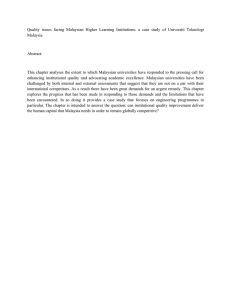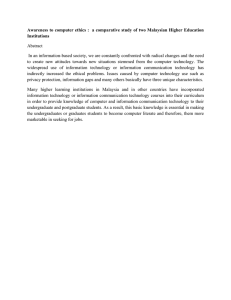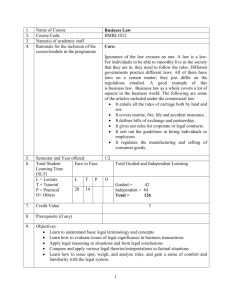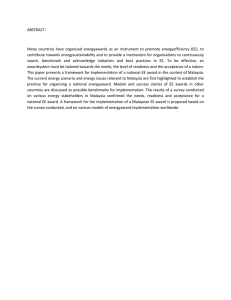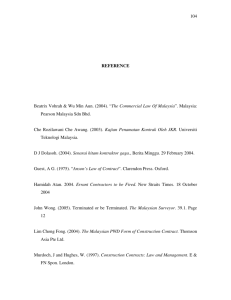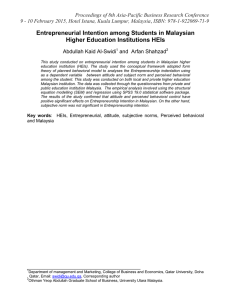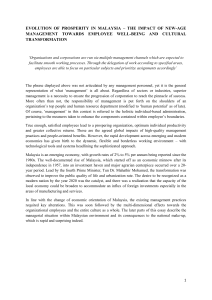ABSTRACT The industry plays an important ...
advertisement
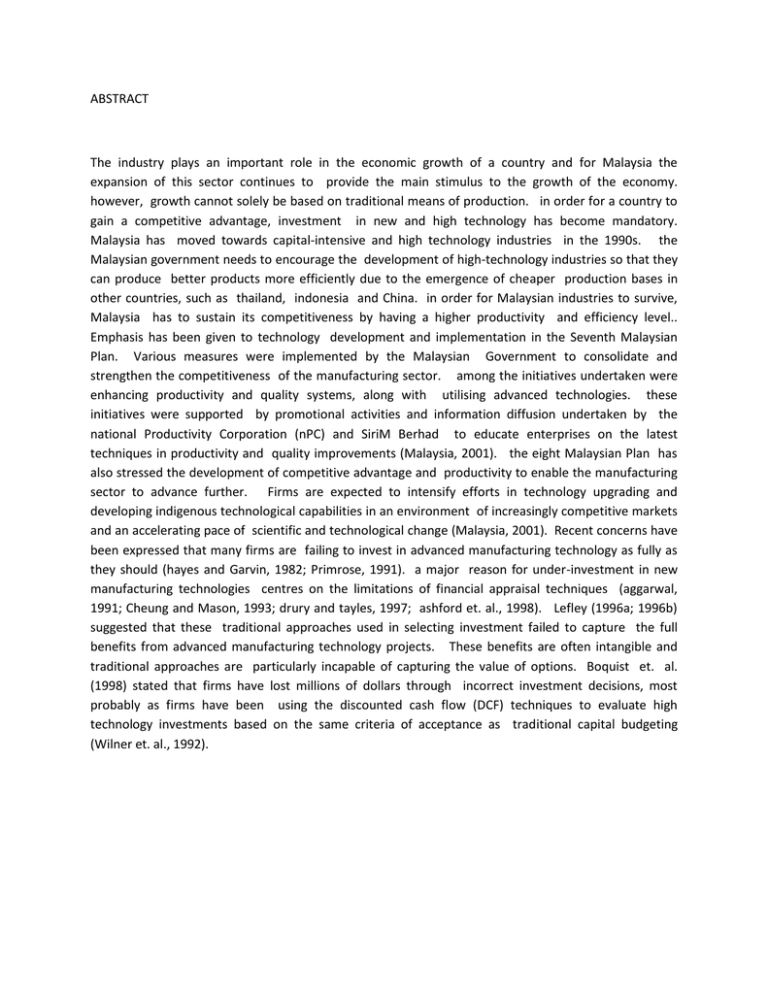
ABSTRACT The industry plays an important role in the economic growth of a country and for Malaysia the expansion of this sector continues to provide the main stimulus to the growth of the economy. however, growth cannot solely be based on traditional means of production. in order for a country to gain a competitive advantage, investment in new and high technology has become mandatory. Malaysia has moved towards capital-intensive and high technology industries in the 1990s. the Malaysian government needs to encourage the development of high-technology industries so that they can produce better products more efficiently due to the emergence of cheaper production bases in other countries, such as thailand, indonesia and China. in order for Malaysian industries to survive, Malaysia has to sustain its competitiveness by having a higher productivity and efficiency level.. Emphasis has been given to technology development and implementation in the Seventh Malaysian Plan. Various measures were implemented by the Malaysian Government to consolidate and strengthen the competitiveness of the manufacturing sector. among the initiatives undertaken were enhancing productivity and quality systems, along with utilising advanced technologies. these initiatives were supported by promotional activities and information diffusion undertaken by the national Productivity Corporation (nPC) and SiriM Berhad to educate enterprises on the latest techniques in productivity and quality improvements (Malaysia, 2001). the eight Malaysian Plan has also stressed the development of competitive advantage and productivity to enable the manufacturing sector to advance further. Firms are expected to intensify efforts in technology upgrading and developing indigenous technological capabilities in an environment of increasingly competitive markets and an accelerating pace of scientific and technological change (Malaysia, 2001). Recent concerns have been expressed that many firms are failing to invest in advanced manufacturing technology as fully as they should (hayes and Garvin, 1982; Primrose, 1991). a major reason for under-investment in new manufacturing technologies centres on the limitations of financial appraisal techniques (aggarwal, 1991; Cheung and Mason, 1993; drury and tayles, 1997; ashford et. al., 1998). Lefley (1996a; 1996b) suggested that these traditional approaches used in selecting investment failed to capture the full benefits from advanced manufacturing technology projects. These benefits are often intangible and traditional approaches are particularly incapable of capturing the value of options. Boquist et. al. (1998) stated that firms have lost millions of dollars through incorrect investment decisions, most probably as firms have been using the discounted cash flow (DCF) techniques to evaluate high technology investments based on the same criteria of acceptance as traditional capital budgeting (Wilner et. al., 1992).
